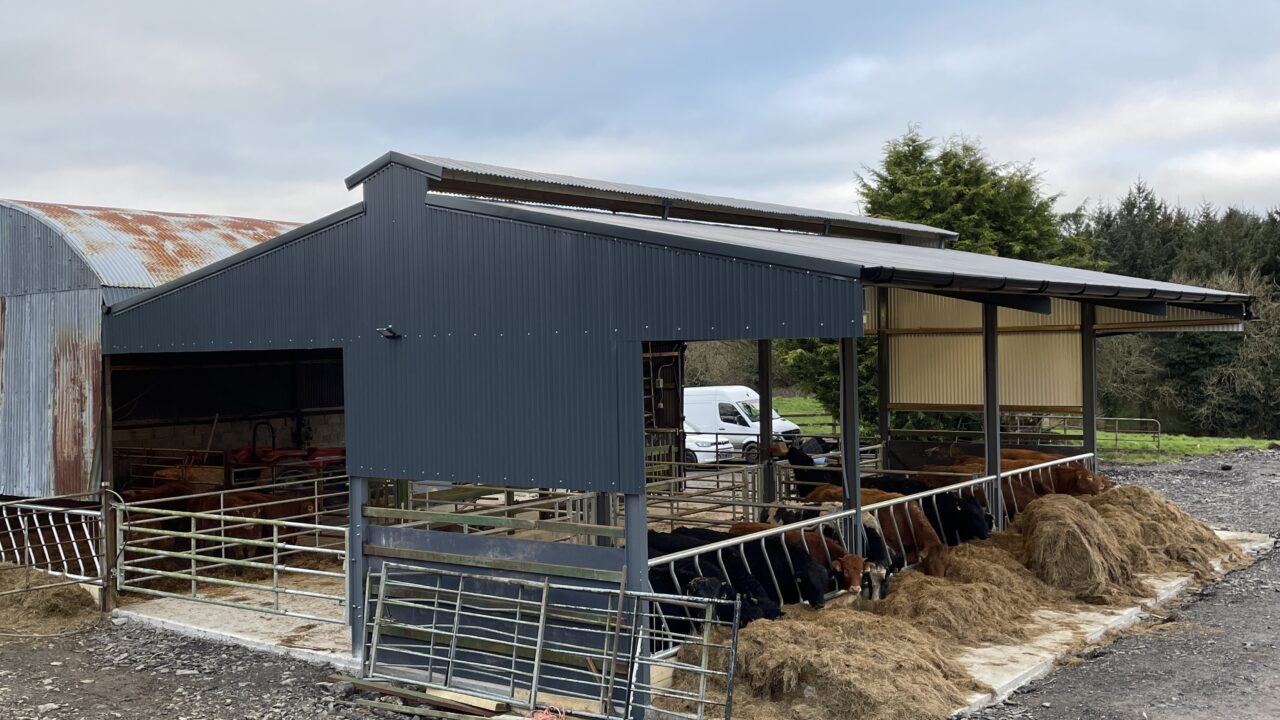Christopher Corrie and his father of the same name are farming in the townland of Drumeague near Bailieborough in Co. Cavan, and recently built an impressive new slatted shed for their suckler herd.
The duo run a part-time spring calving suckler enterprise and Agriland recently paid a visit to the farm to see the new shed the Corries built.
Christopher Corrie (junior) explained how the new shed came about.
He said: “The shed came about out of necessity. We were out-wintering all our cattle and it worked grand in a dry winter but it was torture in a wet winter”.
“We needed better handling facilities and with the way legislation is going, we said we needed to build a slurry store too.”
“With both of us working off farm, we want to be able to switch on a light in the evening and have all our stock in front of us.”
Christopher works with AHV providing dairy, suckler and calf-rearing farms in the Cavan and Monaghan area with non-antibiotic animal health products.
The Corries generally calve 12-14 suckler cows every year and sell their weanlings. Commercial weanlings are sold at the mart and their pedigree Limousin cattle are sold privately.
A sample of the quality weanlings produced on the farm:


Christopher said that before the new shed came about, winter housing on the farm was limited.
“All we had originally was the hayshed. It was a dry-bedded, general shed. We do all our own small square baling so there was hay stacked in it most winters.
“The crush and handling yard was to the side of the hayshed and was built using box irons.”
The decision was made to construct a three-bay slatted shed with a dry-bedded lyeback.
This development was tied in parallel to the existing hay shed so existing shed space could be better utilised also.
The existing hay shed was 24ft wide and 45ft long (three spans of 15ft).
A 17ft wide roofed passage was put between the hayshed and the slatted shed and a 12’6ft slat was used with an 8ft concrete feed apron at the front. To tie in with the hay shed, all spans were 15ft wide.
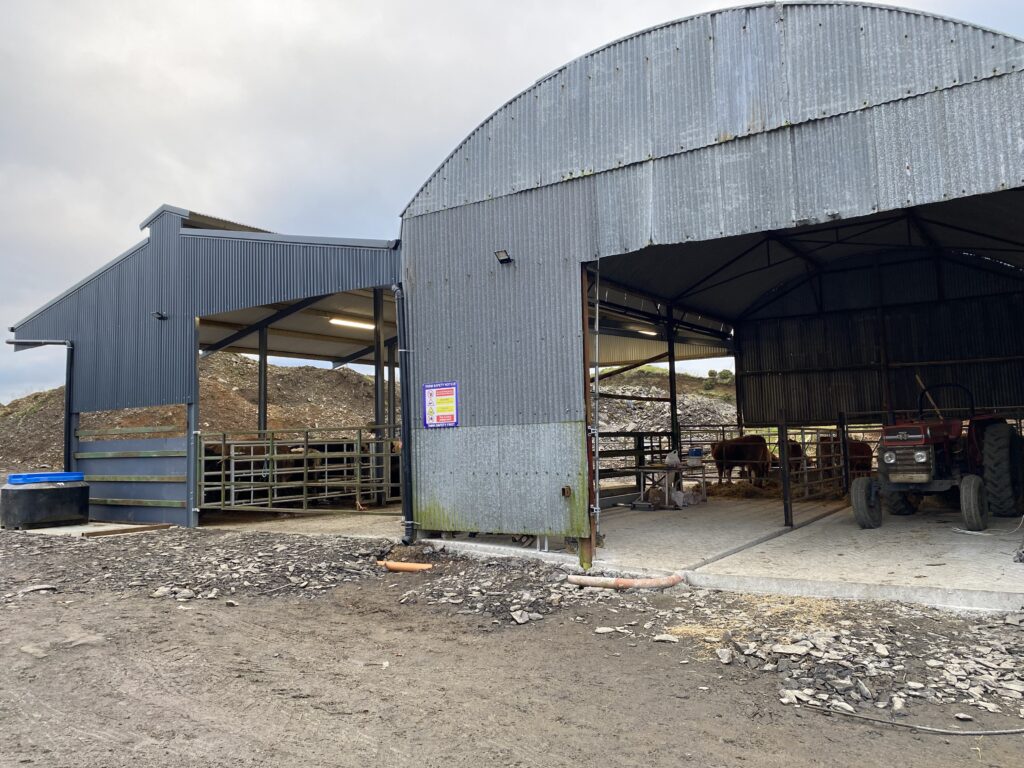

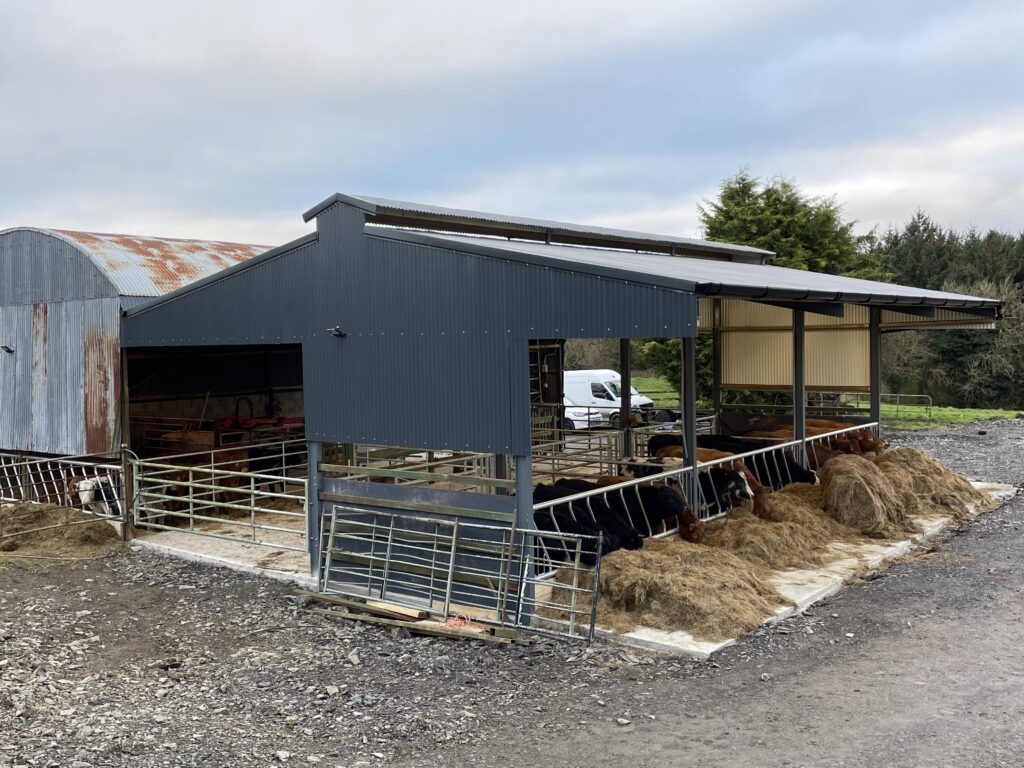
The concrete area is all sloped towards a central channel that is piped into the slatted tank.
Christopher said the decision to add the 17ft passage between the existing hay shed and the new slatted shed added cost to the job but leaves the shed bigger allowing for more options.
Commenting on the space between the tank and the hay shed, he said: “You can do anything with it and that’s the beauty of it. When it’s not being used for cattle, you can stack bales there or park a machine in it or do work on a machine.
“There’s loads of light too. The lye-back can be used to calve a cow and we put creep gates at back of the slatted pens if we’re calving early or ever go down the autumn-calving route.”

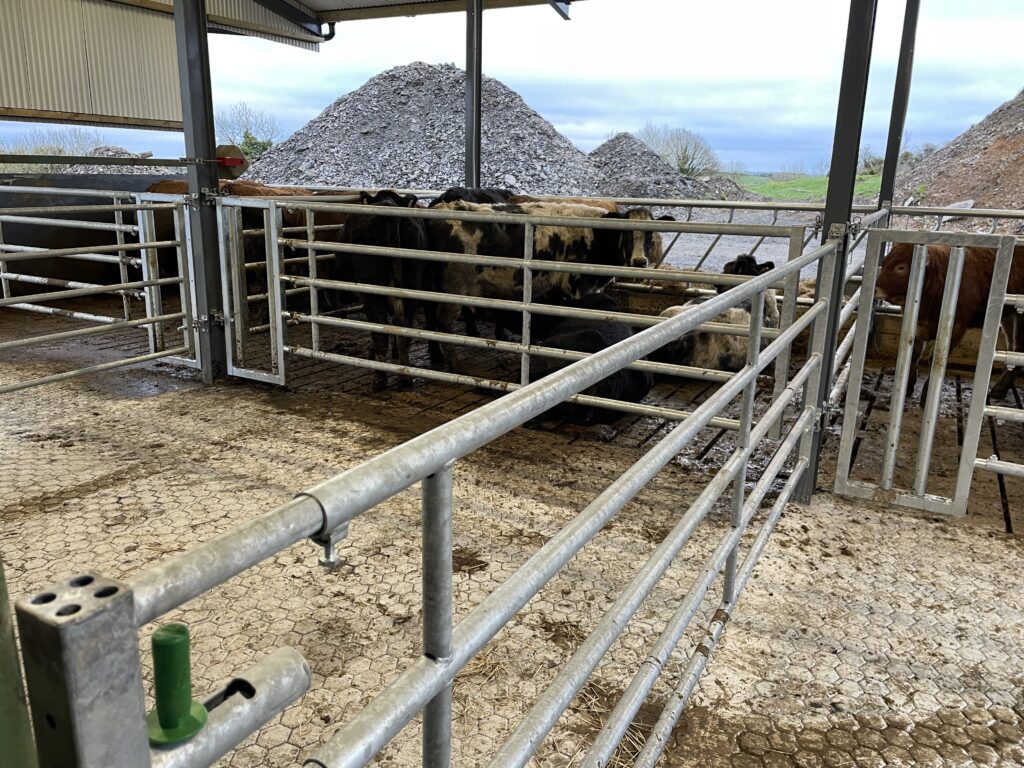
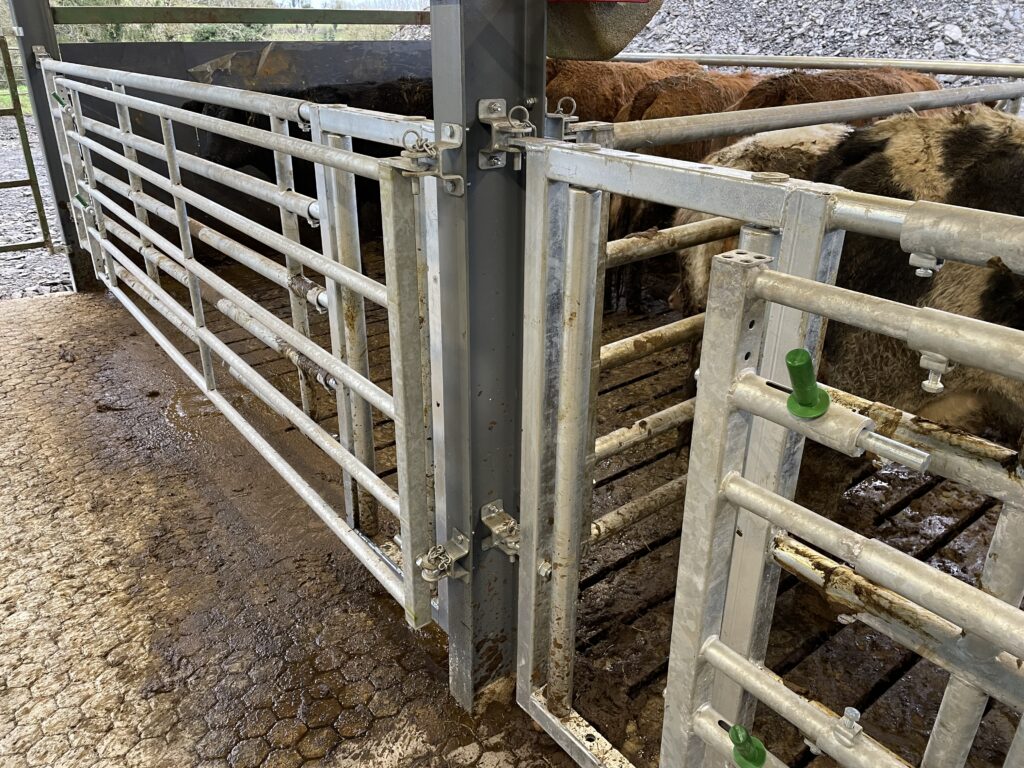
He said there was very little alterations needed on the existing hay shed: “All we had to do with the existing shed was take the side sheeting off, take out the floor and put in concrete. We then clamped the RSJ’s for the new shed onto the existing shed.”
The concrete work was all carried out by local man Finbar Carolan, and the shed and steel work was carried out by another local man John McKeon.
Brothers Mark and Gary O’Connell as well as Chris Magee and Aidan Fay also assisted in the project with works including hanging barriers, plumbing and wiring.
“They all done a real, tasty job and I’m very happy with all the work that went on,” Christopher said.
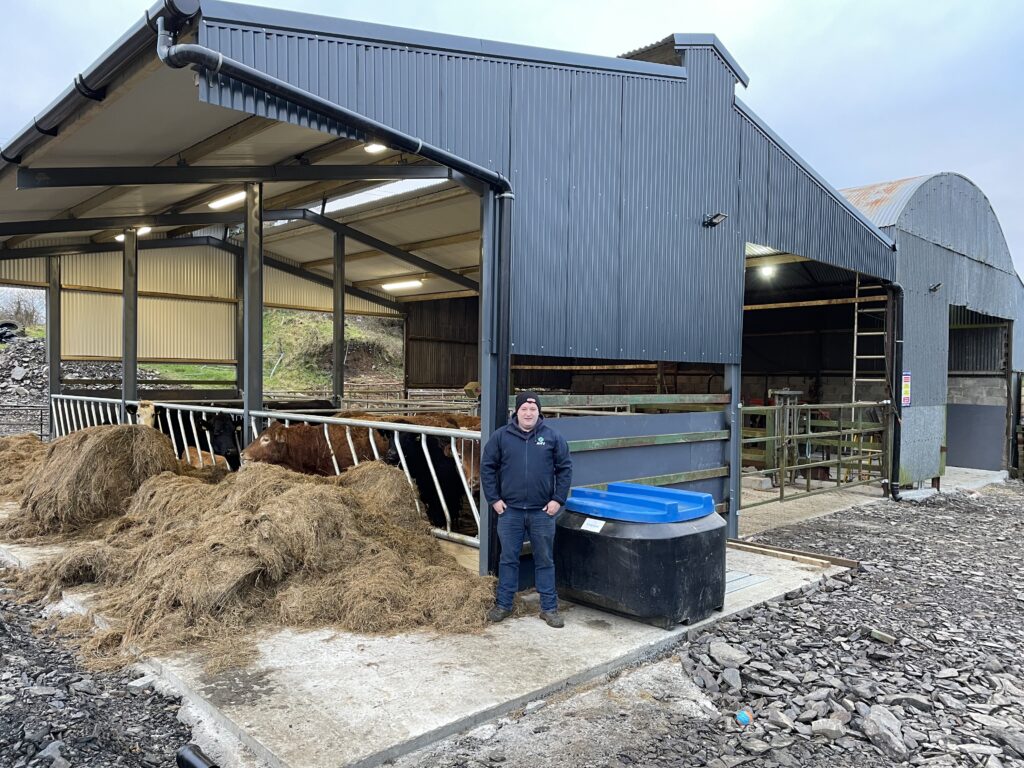
The barriers, gates, drinkers and timbers all came from Teemore Engineering and the slats came from Banagher Concrete.
Feed barriers were placed at the front of the slatted area and dividing gates between each slatted pen with a drinker at each divide.
Creep gates were placed to the rear of each slatted pen. These gates can be opened from either side: “It’s handy for letting cattle through the crush”, Christopher said.
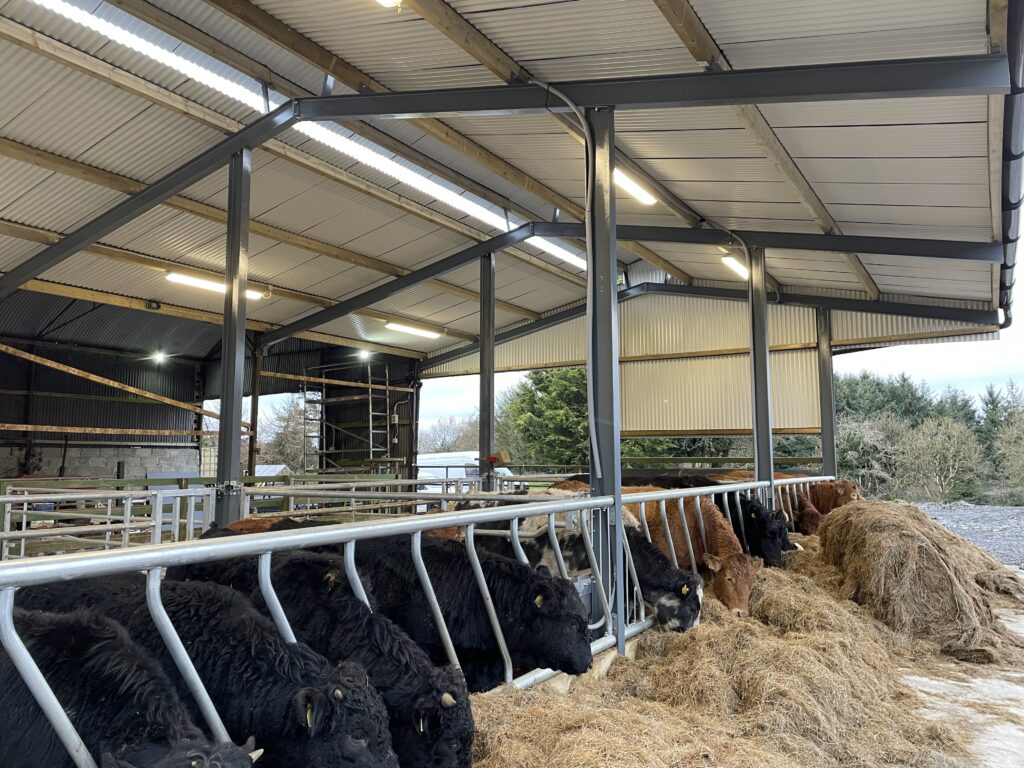
“We also placed a feed barrier at back of the hay shed for feeding any stock over there.”
Interestingly, the external sides of the slatted pen were finished with recycled steel from the old handling yard.
“We thought about walling the sides but we had the steel there from the existing yard so we came up with the idea of putting in the steel, and then bolting stock boarding over it,” Christopher said the idea looks to have been a success.
“The crush was already there and anything else that was any good, we tried to reuse in the new build.”
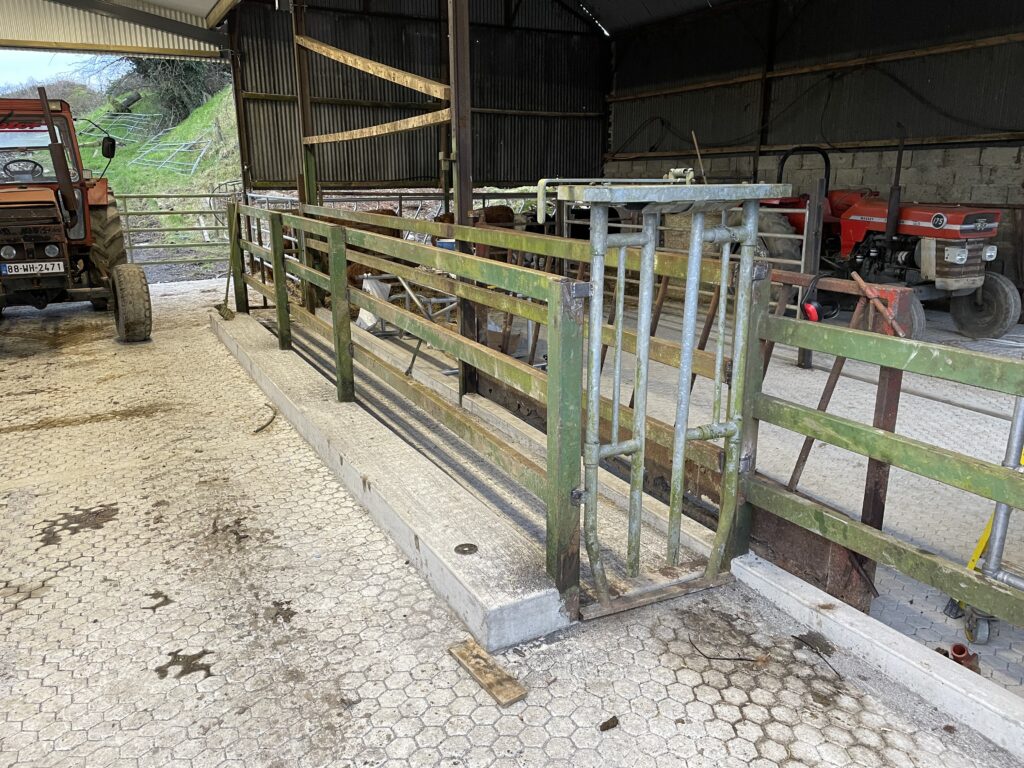
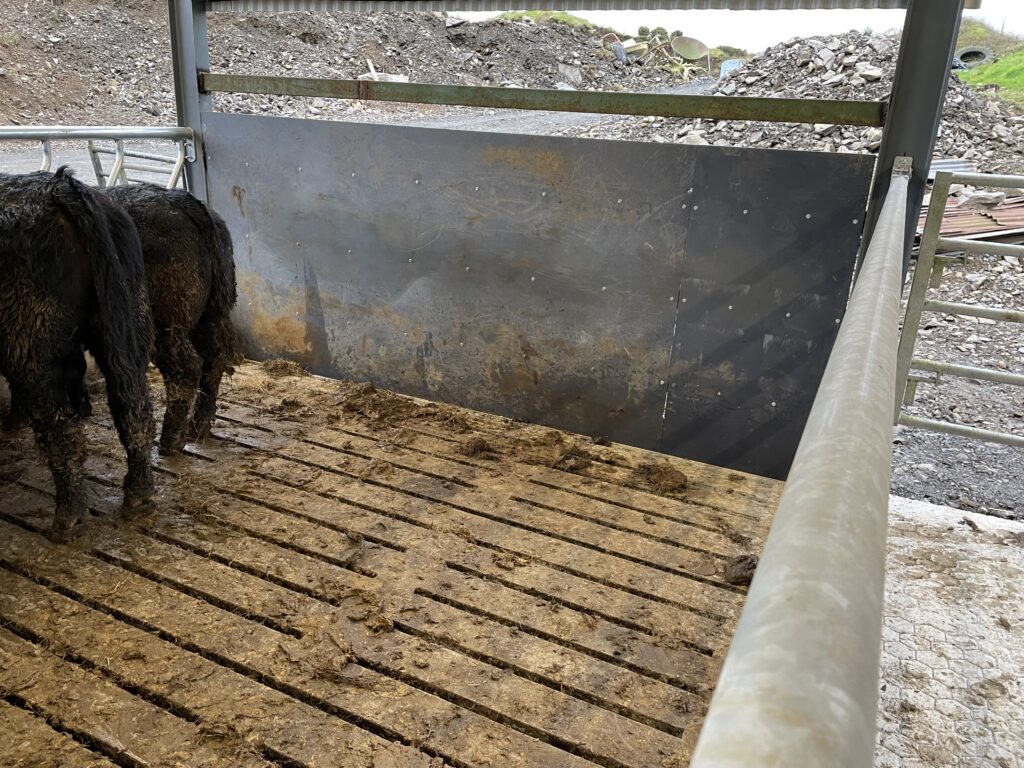
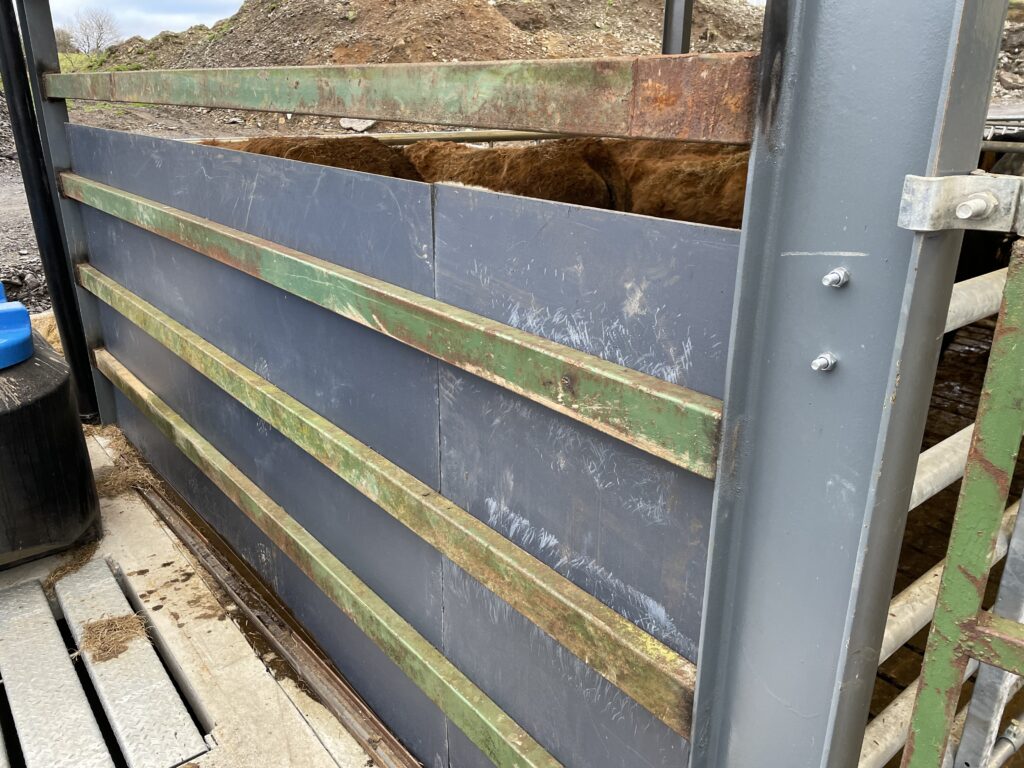

The concrete work came to approximately €20,000 plus VAT. The shed cost approximately €14,500 plus VAT and the barriers, drinkers and timbers cost “approximately €6,000 including VAT”, he said.
Christopher said: “There was a few thousand then for piping, wiring and other bits and pieces.”
Christopher decided not to apply for Targeted Agriculture Modernisation Schemes (TAMS) grant aid and said that “all in, VAT included, the project would have cost not to far off €50,000”.
“The idea for this project was to keep it simple but leave us with loads of options. The pens are all on dropped posts so pens and gates can all come out. Everything can be taken out if needs be.

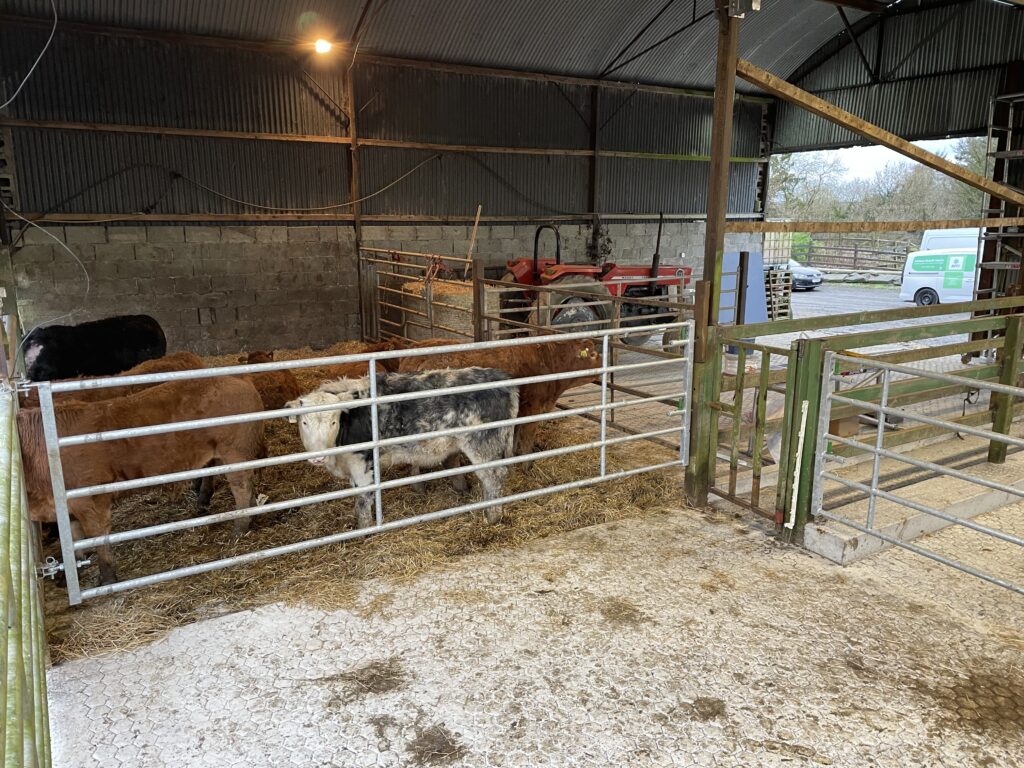
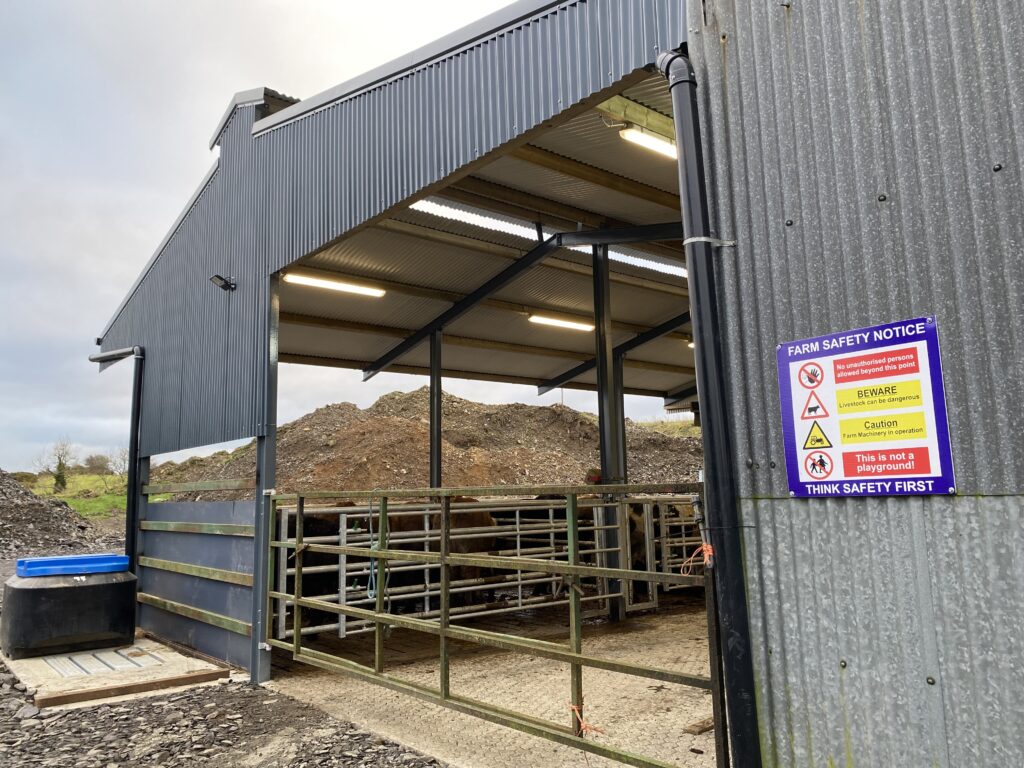
“We still have a few bits to do like put down a bit of concrete to cover up the pipes and grade back the gravel around the shed and we have plans to extend the dry-bedded area to join-in an old cubicle house,” he said.
Christopher is confident their new shed will reduce the workload on the farm in the winter months, and allow for plenty of options in the future.
